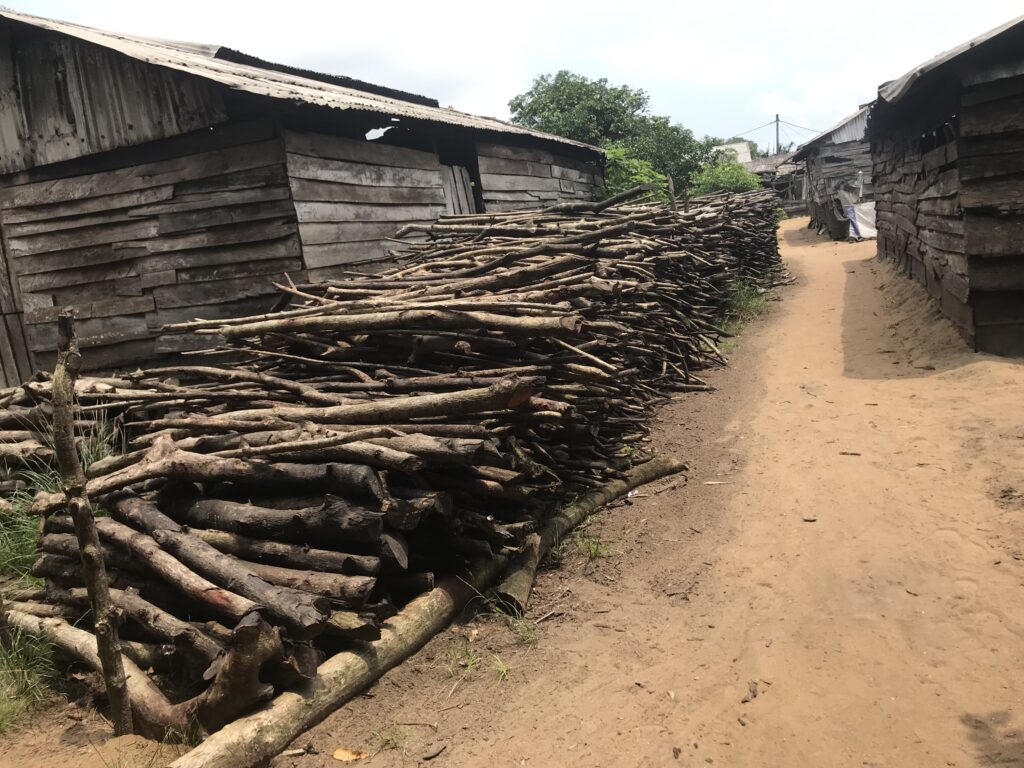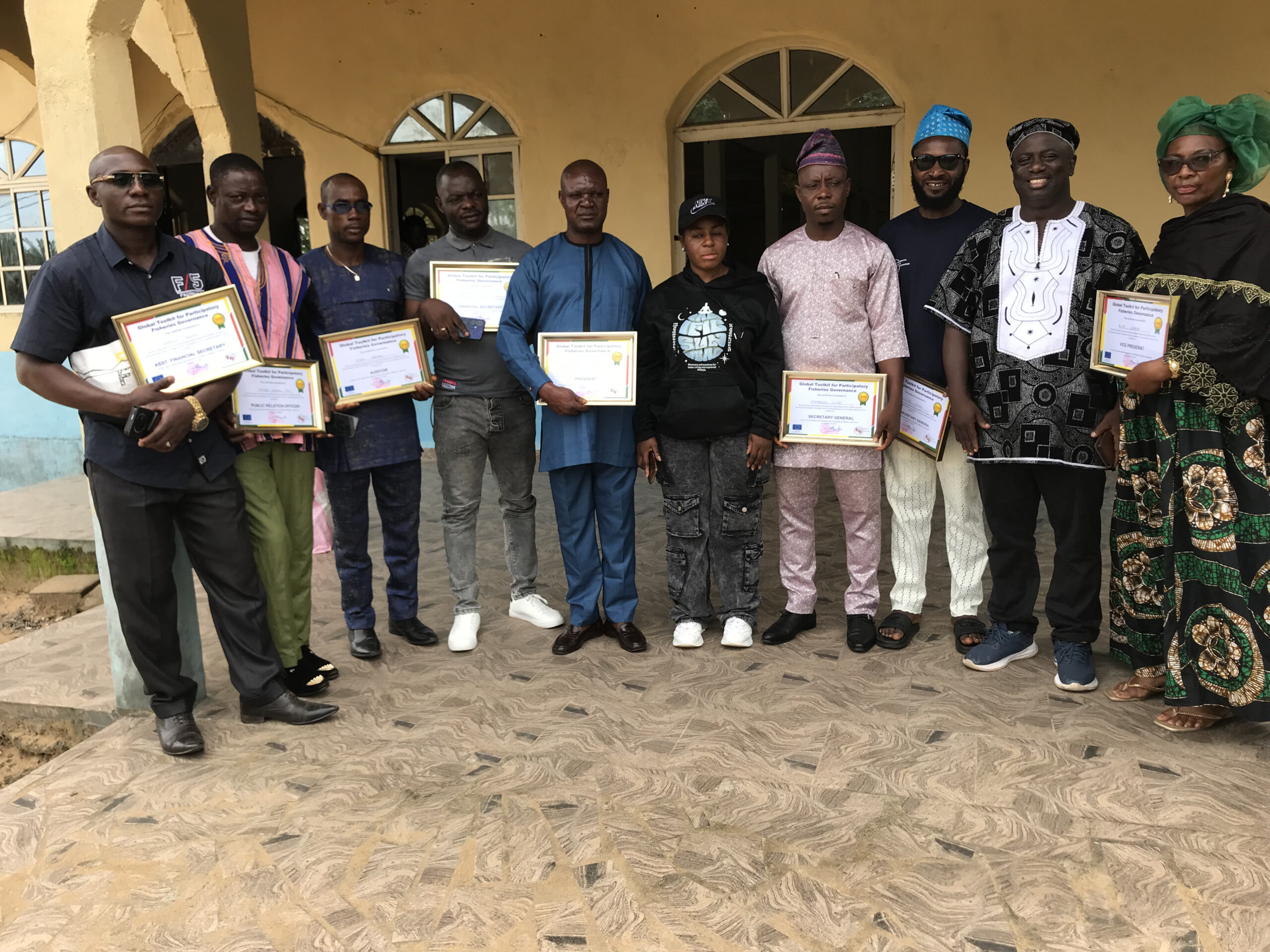By Leocadia Bongben
In the settlements along Douala-Edea National Park—Mbiako, Yoyo I, and Yoyo II—fishers constantly fear “Sapak,” or Chinese trawlers. One of Cameroon’s 22 national parks is Douala-Edea, a first-class park covering over 2633 hectares of land and sea. The park’s conservation efforts are being undermined by several problems, including illegal, unregulated, and unreported (IUU) fishing; the use of pesticides like gamaline to catch fish; undersized nets; inappropriate fishing techniques; and the overexploitation of mangroves.
IUU fishing is a nightmare for fishers in this park. “The trawlers’ army pursues us with guns at sea; occasionally, they spot us and purposefully destroy and cut our nets with the catch. They shoot if we chase them to retrieve the nets. Three fishermen were shot last year, a fisherman in Mbiako, an island in the Mouanko Sub-Division of the Sanaga Maritime Division of the Cameroonian coastal region.
Access to Mbiako, a fishing community of approximately 3,000 people, including fishermen from Ghana, Cameroon, Nigeria, and Benin, is exclusively by water along the Sanaga River.
Peter Adiebanwu, a 23-year-old fisherman from Yoyo II, another fishing community, narrates the same ordeal with the trawlers and adds, “The trawlers equally take our fishing kit, which they cut and sell in Douala.”
Fumelayo Eneola, president of the market women (Buyam-Sellams) in Mbiako, explains how indebted the fishermen have become as they continue borrowing to buy new fishing kits.
Fishermen have made complaints to the Ministry of Livestock, Fisheries, and Animal Industries through an official the locals call ‘Doctor Fish’ and at the regional office of the trawlers in Douala, but there has been no solution. The impact of the trawlers is huge on the fishers, their families, the economy, and biodiversity, as captured by the Environmental Justice Foundation (EJF Report).
Due to Cameroon’s illegal, unreported, and unregulated (IUU) fishing, the European Union (EU) was forced to issue a “red card,” which prevents Cameroonian fishery products from entering the EU in accordance with its IUU law.
EJF is collaborating with the government of Cameroon and coastal communities to eliminate all forms of IUU fishing in Cameroon’s coastal areas. The foundation contributed to drafting the fisheries law.
Local collaborative management committees, LCMC
A potential approach to contribute to the park’s preservation and natural resource management is the creation of local collaborative management committees. These local communities were formerly denied access to and excluded from the management of protected areas, but this is slowly changing as their importance to conservation has been acknowledged.
Within the Programme for the Sustainable Management of Natural Resources, South West Region (PSMNR-SWR), the Ministry of Forestry and Wildlife produced a guidebook in 2024 titled ‘GUIDE TO THE INVOLVEMENT OF LOCAL COMMUNITIES IN THE MANAGEMENT OF PROTECTED AREAS,’ with funding from the German Cooperation. According to the guidelines, local communities must be involved in the planning and decision-making process for protected area management.
It is against this backdrop that EJF stepped in to support the government in putting in place Local Collaborative Management Committees (LCMCs), village-level bodies that give voice to marginalized groups (women, youth, and ethnic minorities) and ensure that their concerns are included in management plans. They help mediate between the community and the government, monitor illegal activities, and lead sustainable development initiatives.
Augustine Fayiah, Environmental Justice Foundation Programme officer for Liberia, says through its global toolkit for participatory governance, EJF provides technical guidance for practitioners working alongside small-scale fishing communities, empowering them in the fight against IUU fishing and, more broadly, working to secure sustainable, legal, and ethical fisheries and community surveillance to detect and deter IUU fishing, among others.
Fayiah says, in line with the global toolkit initiative, Cameroon is among the 15 countries where LCMCs are put in place with the government and coastal communities to reduce all forms of IUU activities in the territorial waters of Cameroon. Communities would use EJF’s Dase app to document illegal fishing. Fishermen capture trawlers with their names and georeferencing and send them to the database for analysis.
The process started with the LCMC formation committees, consisting of a representative from the Conservation Service of the Douala-Edéa National Park, a representative from the Ministry of Livestock, Fisheries, and Animal Industries in Mouanko, representatives from Nigerian, Cameroonian, and Ghanaian communities, youth representatives, local chiefs, and women representatives in both communities, for close to two years with technical support from EJF and its partner, the Cameroon Wildlife Conservation Society, CWCS.
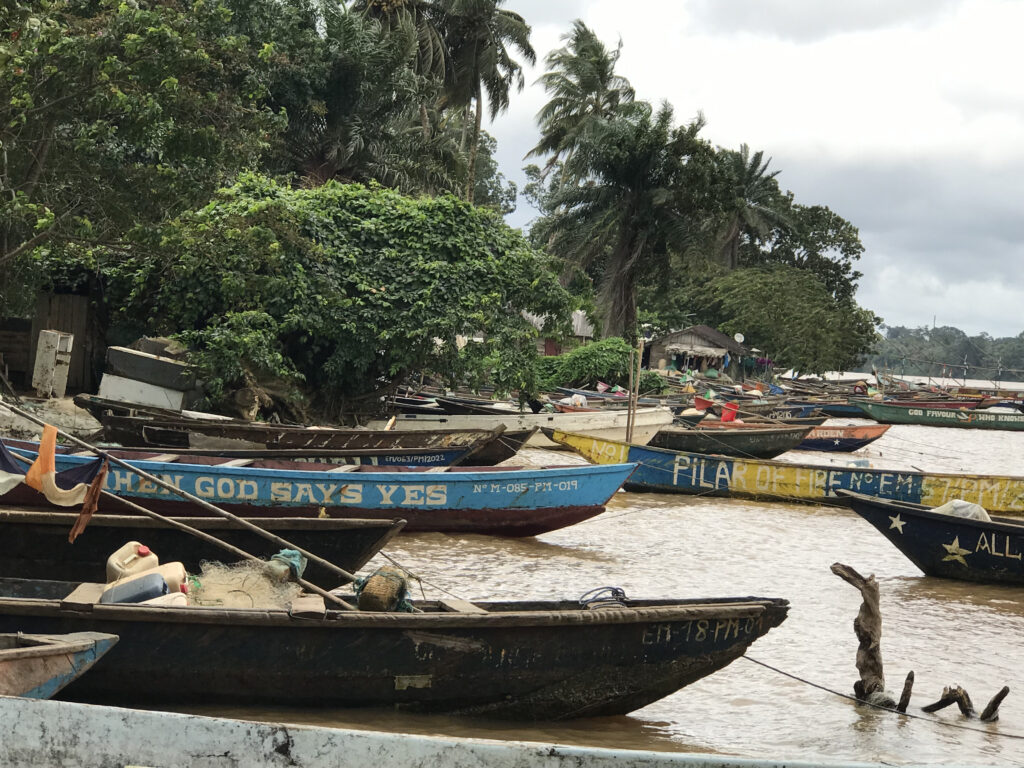
Installation of LCMCs in Mbiako and Yoyo
The slogan, “AJESEKU”—a Yoruba word meaning “Eat small and leave some”—thundered through the neatly swept sandy settlements as the fishers and the Malimba people of Mbiako and Yoyo welcomed the officials to the installation ceremony of the LCMC.
It was not a Sunday, but Cameroonians, Nigerians, Ghanaians, Beninians, and others who make up the fishing community all gathered in their church in Mbiako and later Yoyo to witness their representatives installed. The pastors said the opening prayers to implore the blessings of God on the members of the LCMC, installed by the Divisional Officer, Roland Ngah Koa. The 10-man committees include two Cameroonians, two Nigerians, two Ghanaians, two women, chiefs, and youths, elected for a five-year mandate renewable once.
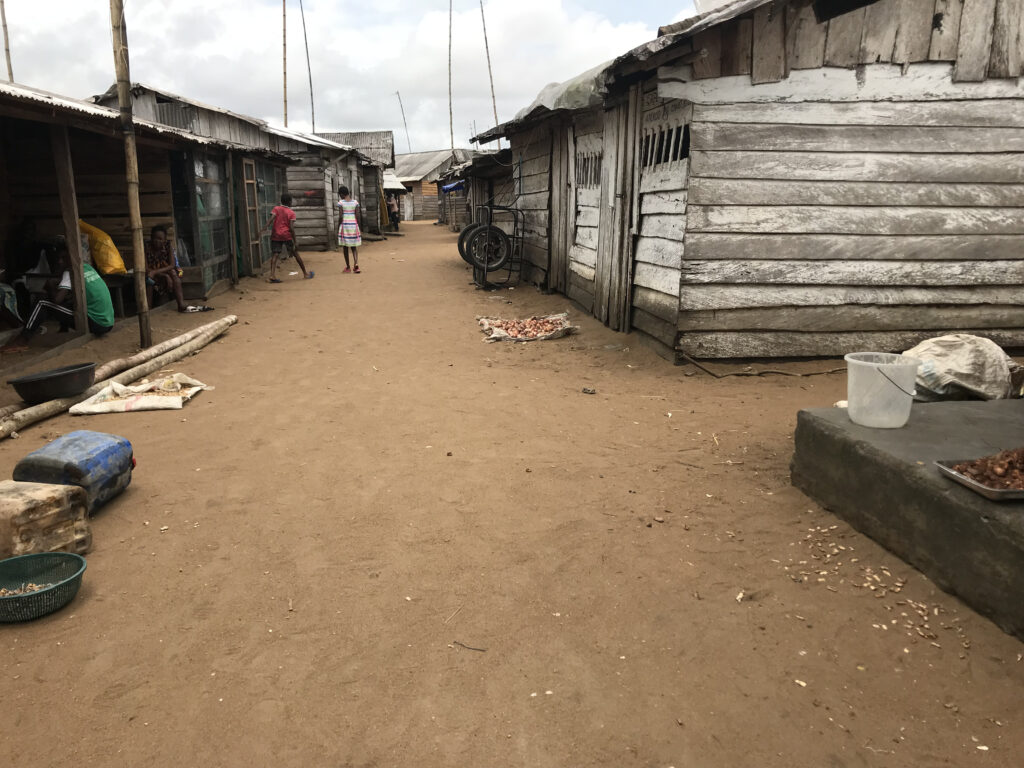
Their task is to mobilize community members, target groups, and indigenous peoples to draw up and implement management plans; sensitize and educate community members on the management of a Protected Area and its Outstanding Universal Values (OUVs); share information on decisions taken by the administration; collect and communicate any grievances, illegal exploitation of timber and NTFPs, poaching, or inadequate hunting practices; and maintain and participate in the surveillance of PA boundaries, among other things.
“I will collaborate with the government to seek a solution to the trawlers phenomenon. I suggest the army should be removed from the trawlers, says Mbianko, LCMC President. Magmaen Loius Fils, LCMC president of Yoyo, shares the same view; besides, he and his team would continue sensitizing the community to understand the importance of conservation, with fishing central to their daily existence. Magnaen says, “The collaboration should be frank. With the contribution of NGOs and the government, there would be a change, especially regarding the trawler phenomenon,” he says.
Guidance from traditional rulers is crucial for members of the LCMC. His Majesty Ebenezer Tonga Ngando, Chief of Yoyo II, says, “Mangrove wood is used to dry fish, and over-harvesting can destroy the ecosystem that serves as a breeding space for fish; if destroyed, there can be no fish,” underscoring the importance of the LCMC in contributing to mangrove conservation.
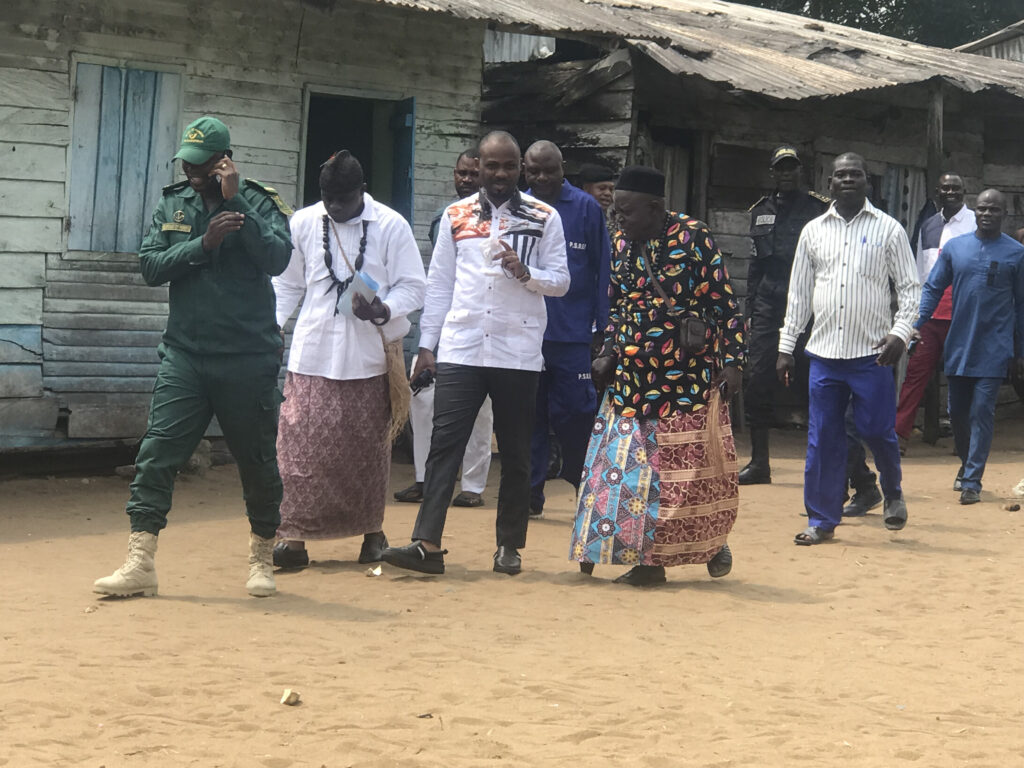
Mvondo Kenneth, the conservator of the Douala-Edea National Park, for his part, welcomed the creation of the LCMC, which is in line with government policy, given that the guide for the involvement of local communities has permitted the integration of people who depend on fishing and hunting around the protected area. “These committees will work in total synergy with the protected area to ensure sustainable management of the sea and forest. The committee will serve as an avant-garde of the conservation services in the protection and efficient management of resources. Alone, the conservation services cannot protect the national park,” Mvondo states.
Assuring the conservation is ready to work with the LCMC, Roland Ngah Koa, the Divisional Officer for Mouanko, however, cautioned the committee members to collaborate with local authorities to manage resources. He warned, “This committee is not a decision-making body. “The authorities are aware of the Chinese trawlers and would take appropriate measures,” he says.
